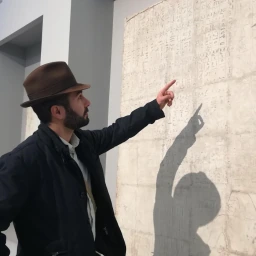An ancient path led from Milan to Lake Maggiore. Where the pre-Alpine slopes began to rise and the path was difficult due to the rugged terrain, was Arsago Seprio. This village in the Seprio countryside was of great importance in the Middle Ages cause it had housed a parish since the earliest days of the diocese of Sant’Ambrogio. Later a large religious complex arose, probably at the behest of Arnolfo II, bishop of Milan between 998 and 1018, who had entrusted its construction to the Comacine Masters. The Basilica of San Vittore, with its Baptistery and the bell tower, still represents one of the greatest testimonies of Lombard Romanesque architecture.

The Basilica of San Vittore in Arsago Seprio
The austere simplicity of the stone characterizes the complex, mighty and graceful, imposing and spiritual. All around it is surrounded by an idyllic landscape. The church of San Vittore has irregular but neat ashlars arranged around the wall perimeter. They are bare of ornaments and essential as just the most profound sacred reveals itself. Nevertheless, the plainness of the stone is vividly revealed through the bands of blind arches and two orders of monoforas. The salient facade projects beyond its openings-three windows surmounted by round arches and the portal-a mystical light, which silently and playfully spreads towards the interior. Thus, the building reveals its basilical plan, with a nave and two side aisles with apses, and a raised chancel.

Slender columns, reused from lost Roman temples, stand among mighty pillars. Some capitals, carved with phytoform motifs, grace the solemn and contemplative atmosphere, motionless and suspended between space and time. Originally, the church of San Vittore hosted also some frescoes. However the neglect of centuries, and a layer of plaster applied during 20th-century restorations, have buried the memory of it.
The massive, quadrangular bell tower contains reused material. A votive slab, placed along a lesene and dedicated to the god Jupiter, reveals some clues to the origins of these worn and coarse stones. The bell tower once had an upper cell, but this was walled up in 1872. Then some bells were placed on the terrace.

The Baptistery and its symbolism
The Baptistery is located on the same axis as the Basilica of San Vittore. It stands in front of it like a sacred guardian, showing a stylistic cohesion. Nevertheless, it is probably more recent than the church by at least a century. This is evident in the refined and mature Romanesque style. The volumetric arrangement, the thicker and smoother ashlars, the perspective proportions and the verticalism appear perfect. The alignment of the two buildings suggests a continuity of rites and cults from the church to the baptismal font. The space separating the Baptistery and the Basilica appears transcendent and the two buildings seem to derive from each other. However, these are the steps that separated the catechumens from baptism, the old man from the new man reborn for the eternal life.

This also explains the octagonal shape of the building, which represented the final and endless day of the resurrection, the eighth, as God spent the first seven days on creation. Only a slender tiburium rising upwards interrupts the rigid monumentality of the Baptistery. Here the arches, the round windows and the spherical vaulted dome are present. The building opens to the outside through two portals on the northern and southern sides. On the eastern side we observe a crooked or misplaced window. Behind an apparently insignificant detail, unexpected and ancient meanings are revealed; from this opening the baptisers could observe the morning star at dawn on Easter Day, a symbol of rebirth in Christ.
Samuele Corrente Naso
Sitography
Sheet of Lombardia Beni Culturali.


